
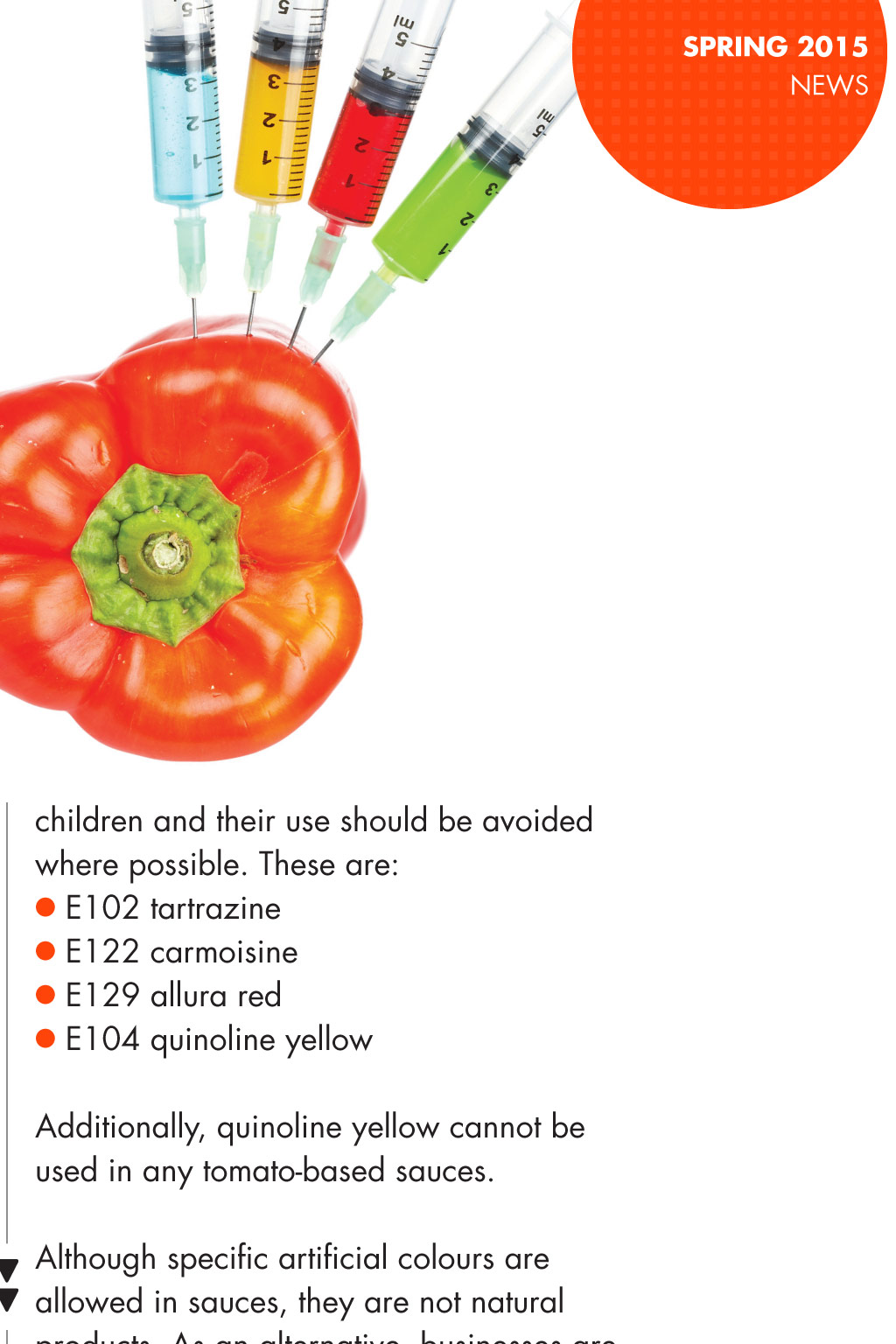
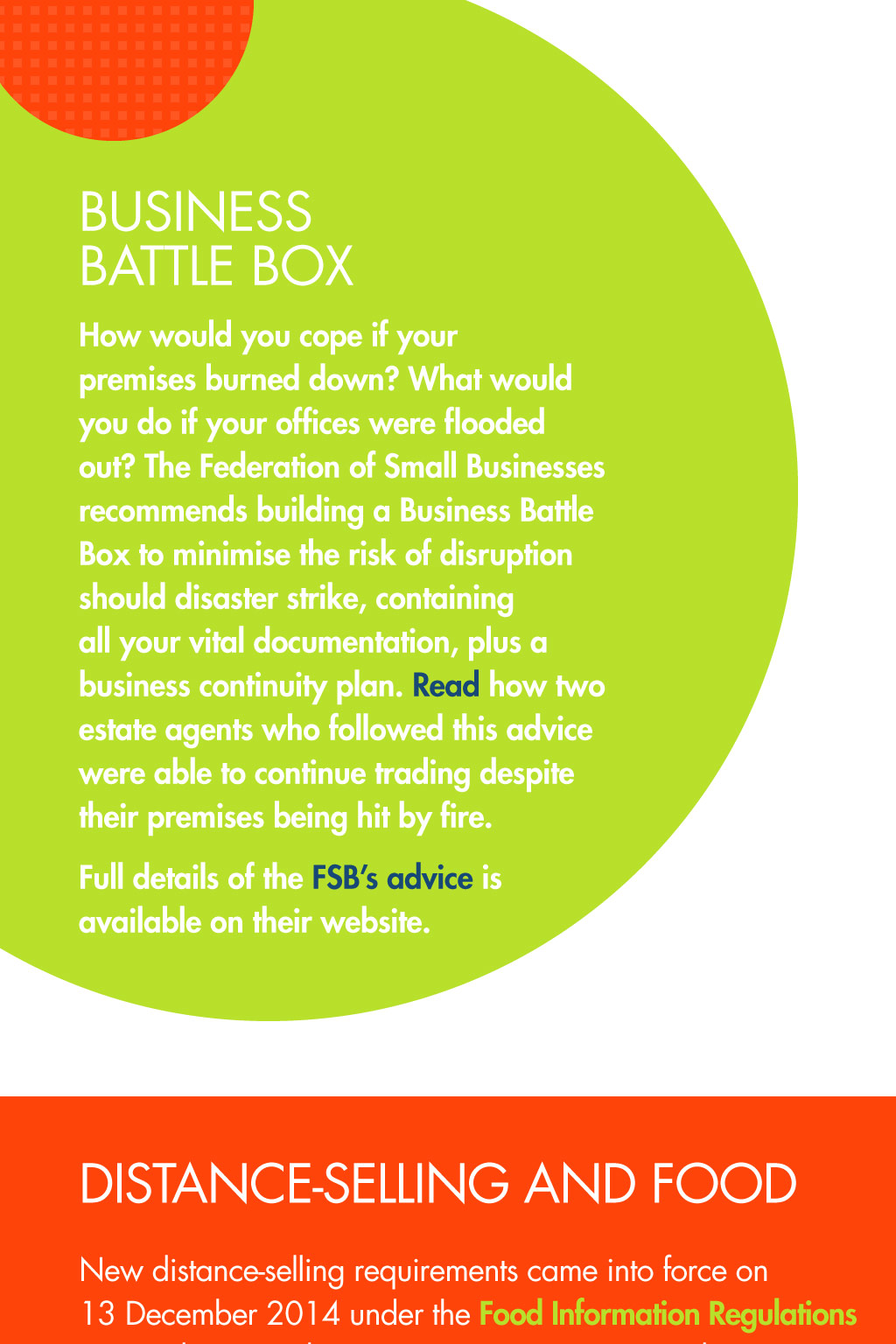
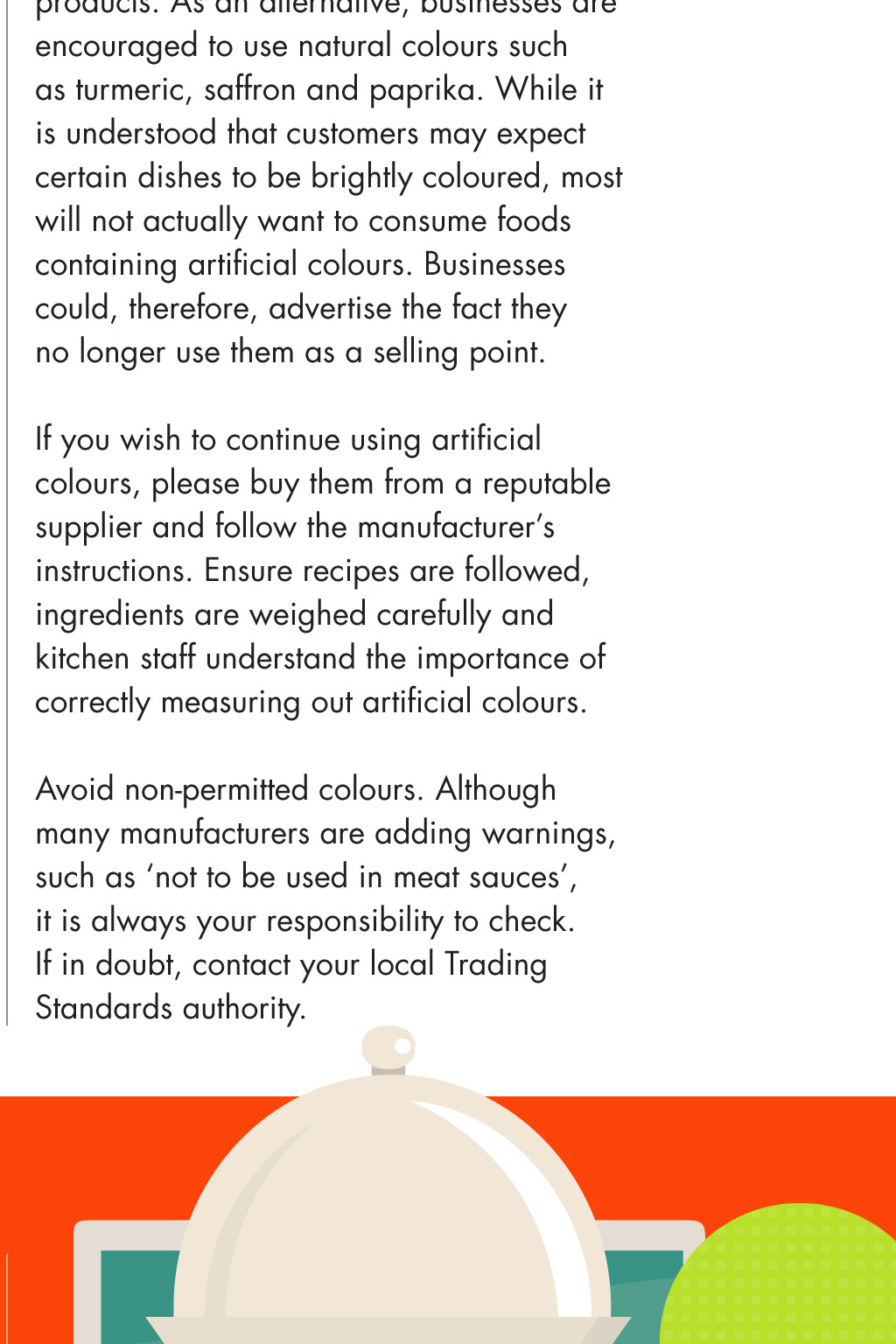
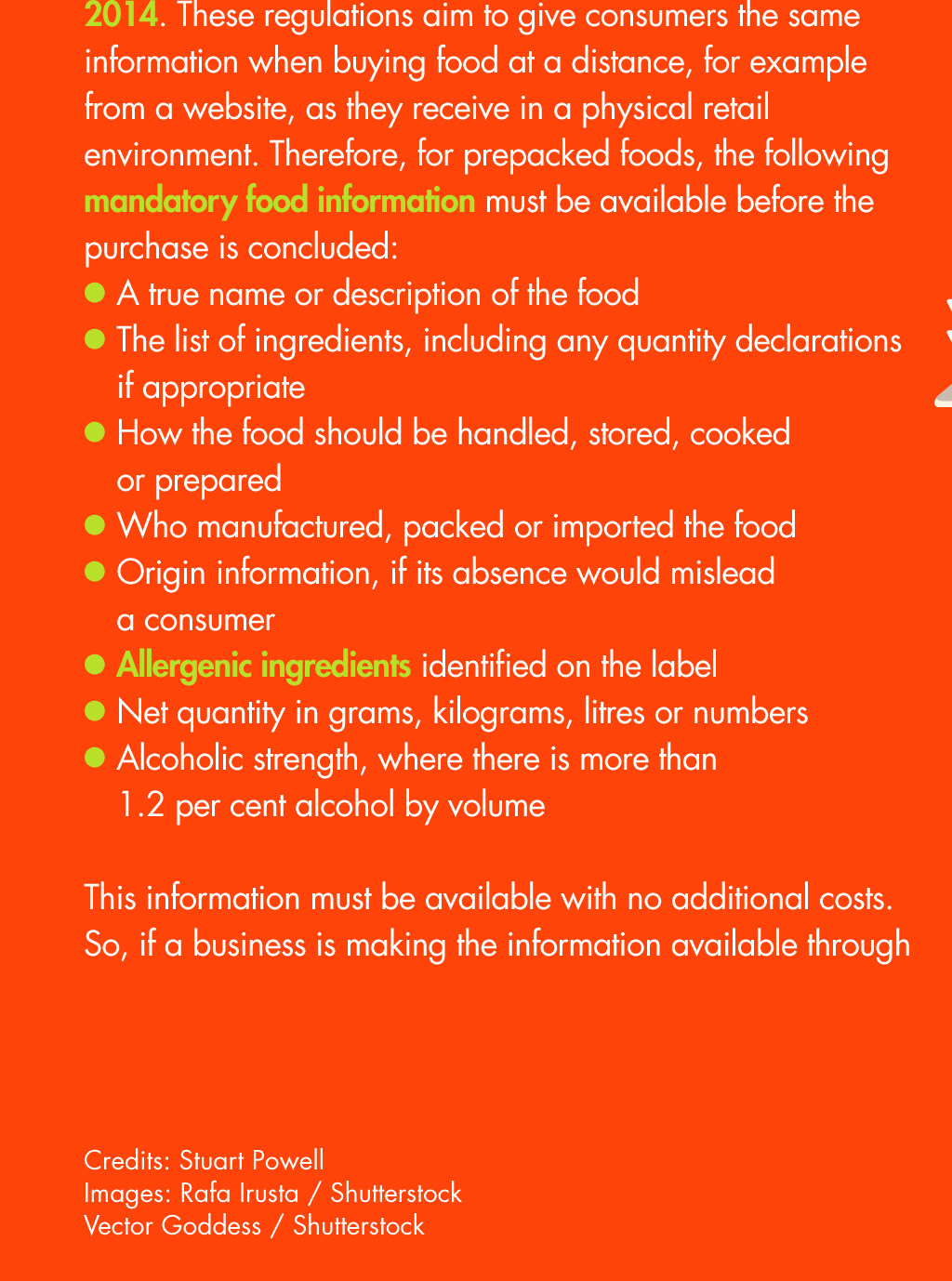
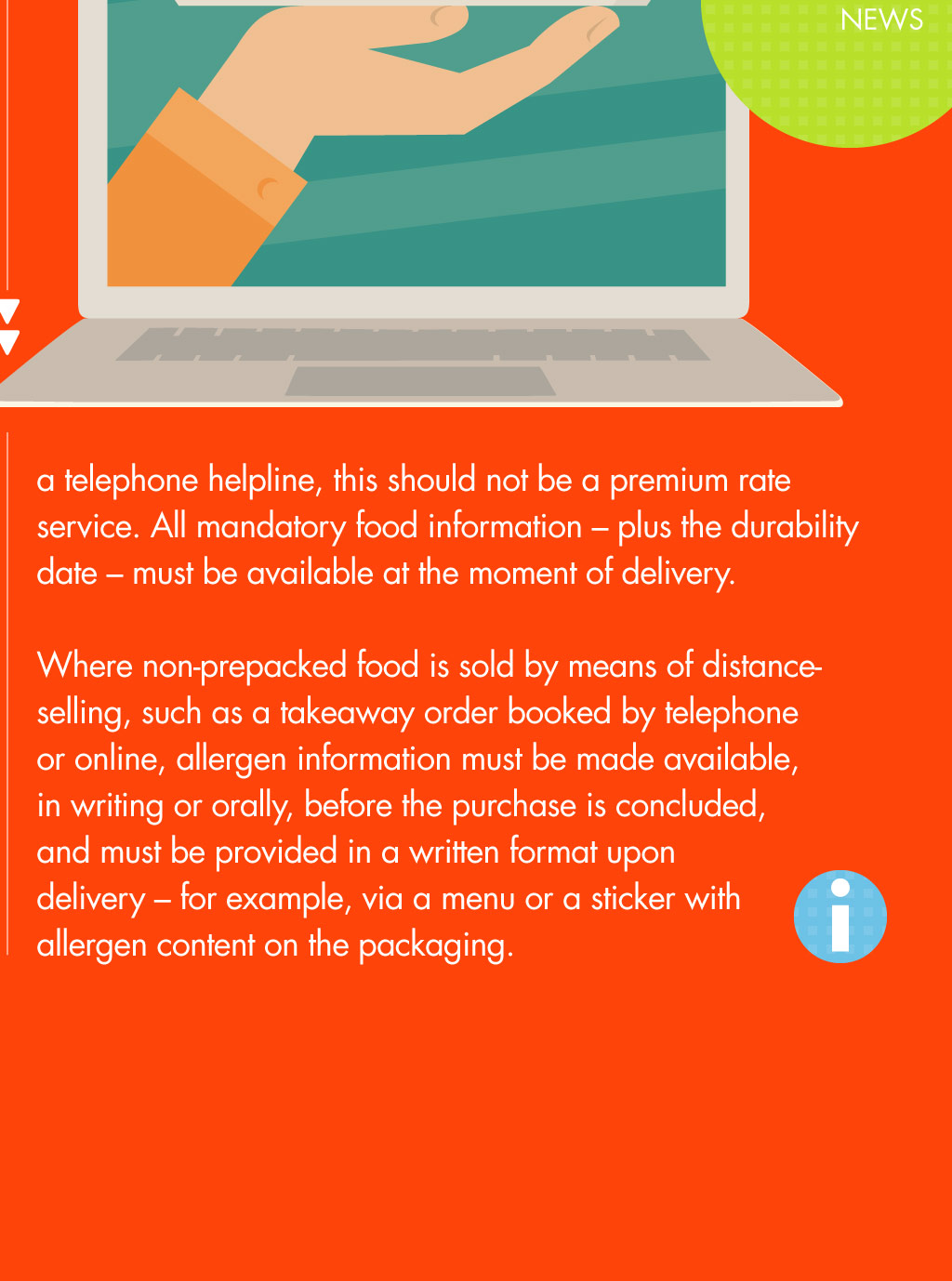






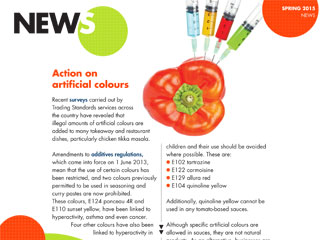
SPRING 2015 neWS Action on artificial colours recent surveys carried out by trading Standards services across the country have revealed that illegal amounts of artificial colours are added to many takeaway and restaurant dishes, particularly chicken tikka masala. amendments to additives regulations, which came into force on 1 June 2013, mean that the use of certain colours has been restricted, and two colours previously permitted to be used in seasoning and curry pastes are now prohibited. these colours, e124 ponceau 4r and e110 sunset yellow, have been linked to hyperactivity, asthma and even cancer. Four other colours have also been linked to hyperactivity in BuSineSS Battle Box How would you cope if your premises burned down? What would you do if your offices were flooded out? The Federation of Small Businesses recommends building a Business Battle Box to minimise the risk of disruption should disaster strike, containing all your vital documentation, plus a business continuity plan. For full details, take a look at the FSBs advice on this simple, effective measure. children and their use should be avoided where possible. these are: l e102 tartrazine l e122 carmoisine l e129 allura red l e104 quinoline yellow additionally, quinoline yellow cannot be used in any tomato-based sauces. although specific artificial colours are allowed in sauces, they are not natural products. as an alternative, businesses are encouraged to use natural colours such as turmeric, saffron and paprika. While it is understood that customers may expect certain dishes to be brightly coloured, most will not actually want to consume foods containing artificial colours. Businesses could, therefore, advertise the fact they no longer use them as a selling point. if you wish to continue using artificial colours, please buy them from a reputable supplier and follow the manufacturers instructions. ensure recipes are followed, ingredients are weighed carefully and kitchen staff understand the importance of correctly measuring out artificial colours. avoid non-permitted colours. although many manufacturers are adding warnings, such as not to be used in meat sauces, it is always your responsibility to check. if in doubt, contact your local trading Standards authority. diStanCe-Selling and Food new distance-selling requirements came into force on 13 december 2014 under the Food Information Regulations 2014. these regulations aim to give consumers the same information when buying food at a distance, for example from a website, as they receive in a physical retail environment. therefore, for prepacked foods, the following mandatory food information must be available before the purchase is concluded: l a true name or description of the food l the list of ingredients, including any quantity declarations ifappropriate l How the food should be handled, stored, cooked orprepared l Who manufactured, packed or imported the food l origin information, if its absence would mislead aconsumer l Allergenic ingredients identified on the label l net quantity in grams, kilograms, litres or numbers l alcoholic strength, where there is more than 1.2 per cent alcohol by volume this information must be available with no additional costs. So, if a business is making the information available through Credits: Stuart Powell images: rafa irusta / Shutterstock Vector goddess / Shutterstock The government provides guidance on allergies and allergen information. For more on food labelling, see this useful overview, plus further documents covering GM ingredients. neWS a telephone helpline, this should not be a premium rate service. all mandatory food information plus the durability date must be available at the moment of delivery. Where non-prepacked food is sold by means of distanceselling, such as a takeaway order booked by telephone or online, allergen information must be made available, inwriting or orally, before the purchase is concluded, andmust be provided in a written format upon delivery for example, via a menu or a sticker with allergen content on the packaging.